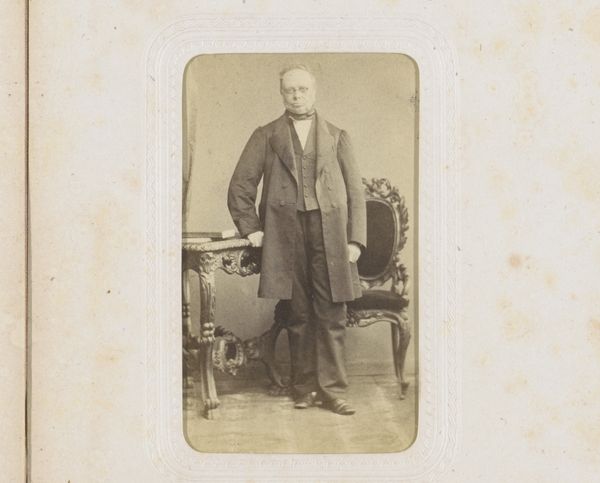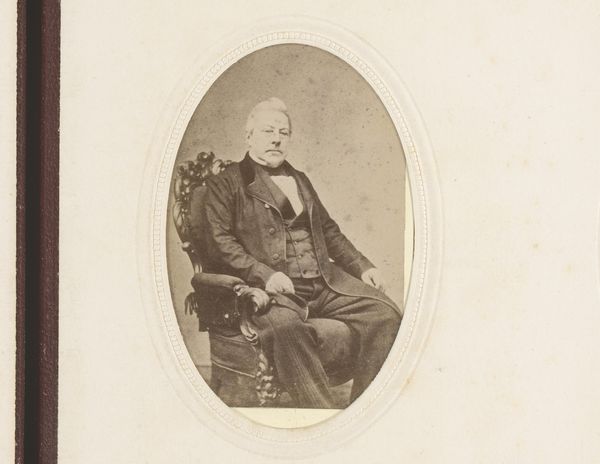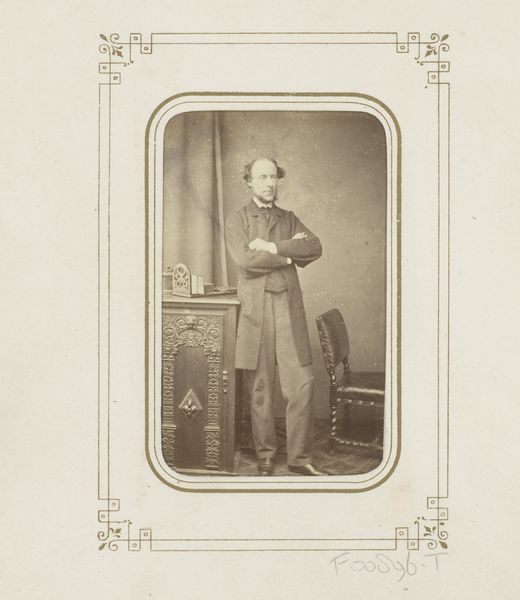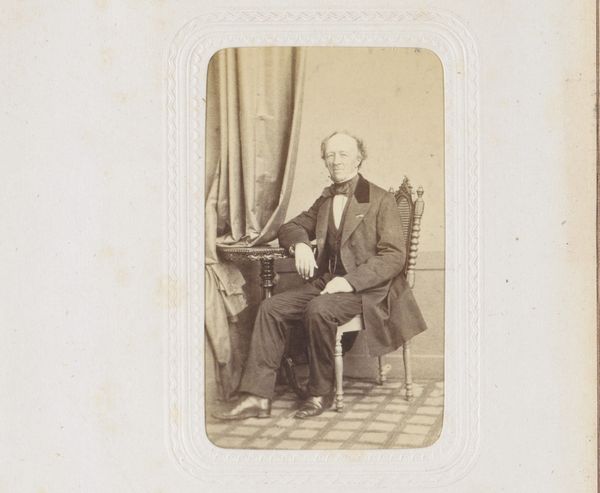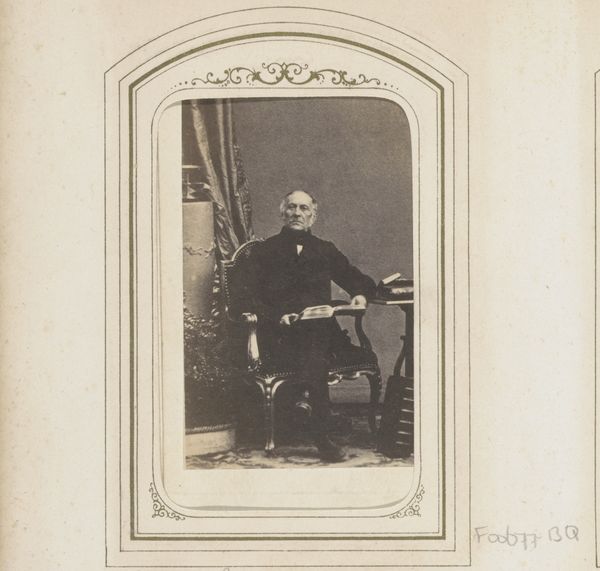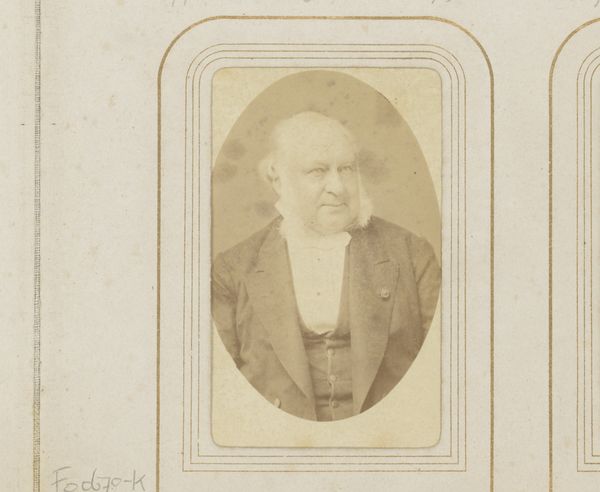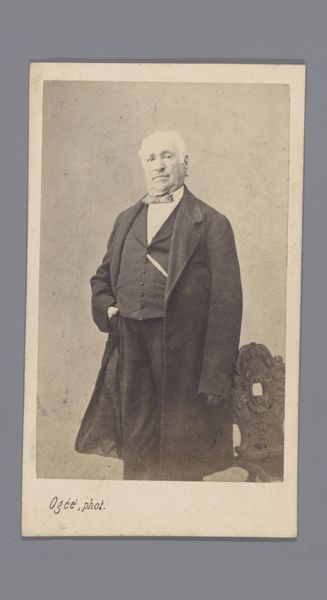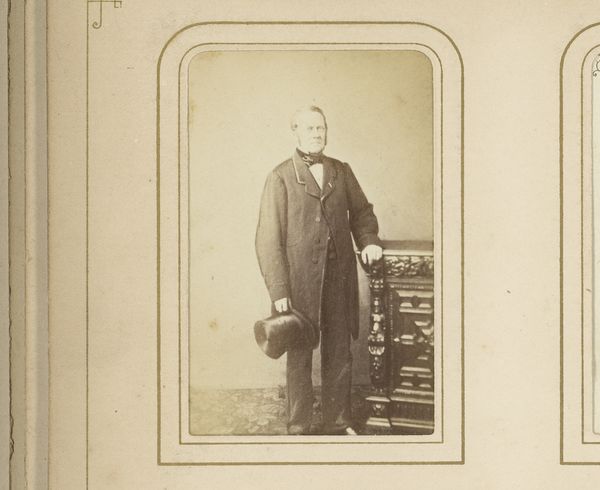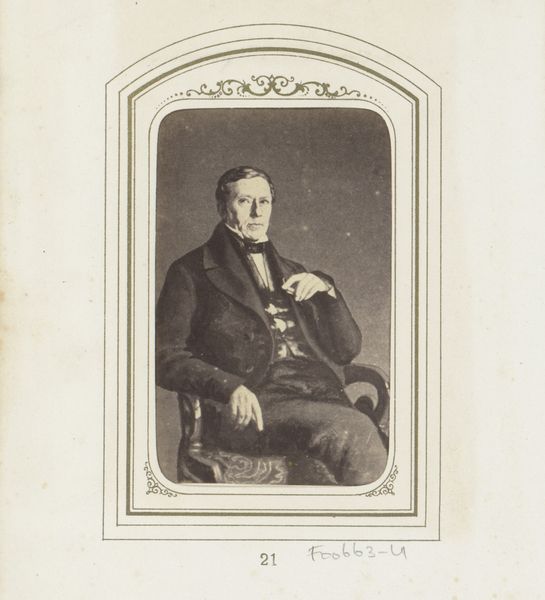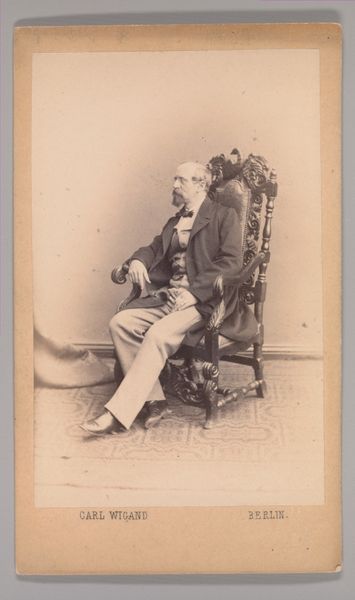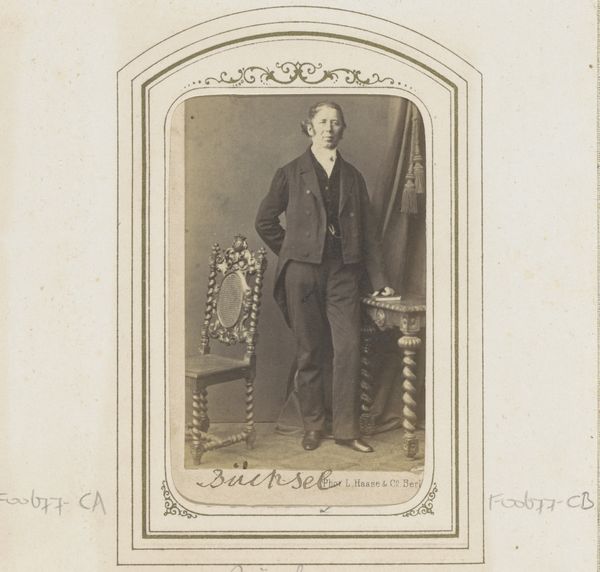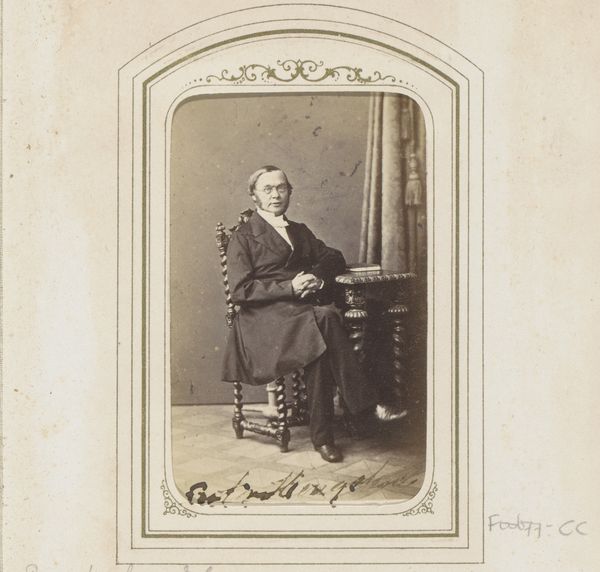
Portret van een onbekende geleerde, vermoedelijk met de achternaam Twisten 1850 - 1900
0:00
0:00
photography
#
photography
#
old-timey
#
19th century
#
realism
Dimensions: height 85 mm, width 53 mm
Copyright: Rijks Museum: Open Domain
Curator: Welcome. We are looking at a photograph entitled "Portret van een onbekende geleerde, vermoedelijk met de achternaam Twisten," or "Portrait of an unknown scholar, presumably with the surname Twisten," dating from 1850 to 1900, made by Leopold Haase & Co. Editor: Somber. A solemn portrait. It's visually very rigid and formal. The stark monochrome palette, that composed stillness… it feels incredibly…contained. Curator: Yes, the very material of photography in that period reflects those constraints. Think about the social context; portraiture became somewhat accessible but was still a considered, even costly process, often emulating painted portraiture, yet becoming a part of material and political history. The sitter's status, implied by his clothing, placed within a wider visual rhetoric of scholarly identity. The labor involved—setting up the studio, the precise chemical processes—it's all embedded in this single image. Editor: And the arrangement itself, the man, his chair, the table draped—these forms and shapes present clear visual cues of stability and power, even with its formal framing. It creates a composition dominated by verticals and horizontals, offering us order and perhaps, intellectual authority. What sort of scholar might this have been, do you think? Curator: The photographic studios like Haase enabled the rising merchant class to emulate aristocratic display—an affordable version, certainly. But what fascinates me is the standardization: posing, props, the monochrome tones all acting to create this generalized 'respectable' image, even for this unknown subject. A controlled market for image-making shaped desires and the consumption of portraits. Editor: True. The texture, the very evident materiality of the photograph adds a layer of emotional complexity. The depth of shadow that seems to envelope him, the crisp details of his suit contrasted to the soft backdrop. The semiotics of black and white film gives us such tonal tension in how we read him and that time period now. Curator: A very successful exercise in image creation for its time. We see how social position and status were consciously constructed through the very tools of this emerging technology. Editor: Yes, through its construction, this photographic portrait reveals so much about the act of looking and representing power. It's truly a study in composition.
Comments
No comments
Be the first to comment and join the conversation on the ultimate creative platform.

